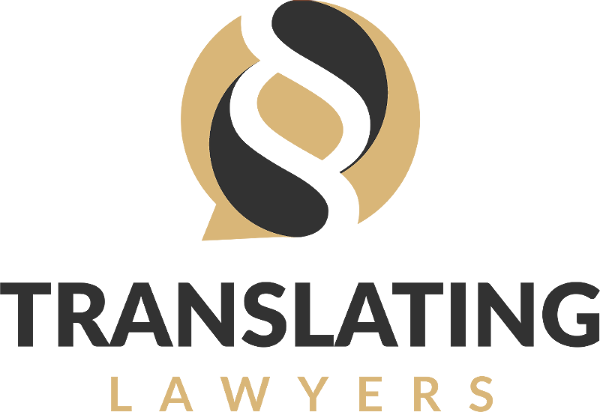Translating Across Legal Systems Part 2: Why Sources of Law Matter

Every language professional working between Common Law and Civil Law countries knows the broad brushstrokes differences between both legal traditions. They all know, for example, that Common Law is judge-made law while Civil Law is codified or that Common Law is characterized by the doctrine of precedent while precedent is not (necessarily always) binding in Civil Law countries.
However, as I’ll demonstrate throughout my next few posts, those broad brushstrokes are quite misleading. There are, in fact, some more profound differences between the two legal traditions, and those differences affect translation.
The matter is overwhelmingly complex. And when one is overwhelmed by complexity, the best place to start is always the beginning. When it comes to comparing Common Law to Civil Law, “the beginning” is how each system conceives of the law itself and its sources. And if you bear with me to the end, I’ll show you how that affects translation as well.
I. What is law?
Jeremy Bentham once wrote: “Law or the law, taken indefinitely, is an abstract or collective term, which when it means anything, can mean neither more nor less than the sum total of a number of individual laws taken together.” Meaning, basically, that nobody can really define what the law is.
In that vein, HLA Hart wrote: “Few questions concerning human society have been asked with such persistence and answered by serious thinkers in so many diverse, strange, and even paradoxical ways as the question ‘What is law?’”
The concept of law is illusive and there are about as many definitions of law as there are legal thinkers. But despite this conceptual gap, the law lives and breathes in every country—and she does so through her sources.
II. Sources of law
Although the general meaning of the word sources is origin, the term sources of law is used in different senses. In its literal sense, it refers to the original documentary source of our information concerning the existence of a rule of law. For example, law reports or civil codes are a source of law in that sense.
In its historical sense, the term refers to the mediate or immediate sources-original from which rules of law derive their content as a matter of legal history. In that sense, the writings of Blackstone and Coke are sources of English law, because they enunciate rules which are now embodied in judicial decisions and Acts of the English Parliament.
There are two main sources of law: formal and material; and material sources can be further subdivided into legal and historical.
a. Sources of Civil Law
In broad brushstrokes, sources of law in the Civil Law tradition, regardless of subgroup (i.e. Napoleonic, Germanic, Nordic, and Chinese) can basically be boiled to three: legislation, custom, and general principles of law. And while precedent and the writings of legal scholars are also sources of law in many, if not most, civil law countries, they are secondary or non-binding sources, which does not mean however that they should be plaid down (as we’ll discuss in my next post).
b. Sources of Common Law
Meanwhile, in the Common Law tradition, primary sources are the actual law in the form of constitutions, administrative rules and regulations, statutes, and court cases while secondary sources are those that restate the law while also discussing, analyzing, describing, explaining, or critiquing it.
By that rationale, secondary sources are used to help locate primary sources of law, as well as to define legal words and phrases, or help in legal research. In plain English, basically anything that is more than the actual law itself is considered a secondary source of law.
IV. Sources of Law and Translation
Why should this matter to translators? For at least two reasons.
First, because sources of law affect the way legal practitioners think about the law; which, in turn, affects the way they communicate. And as cultural bridges, it is just as important for legal translators to understand legal terminology as it is for them to understand legal thinking.
Because the Common Law tradition is judge-made law it relies mostly on induction. Before deciding a case, judges in the Common Law tradition have to look at previously decided cases of a similar nature by their own court or by a superior court and extract, from those particular cases, general rules that they can apply to the case before them. The logical-linguistic method of reasoning that parts from particular premises to induce general rules is known as the ‘Inductive Method.’
Civil Law judges do the exact opposite. They decide cases according to the law laid down in the code. They part from general premises or facts of the case and, by way of deduction, subsume those premises or facts within the law. The logical-linguistic method of reasoning that parts from general premises or facts to deduce concrete applications or consequences is known as the ‘Deductive Method.’
While the conclusion of a deductive argument is characterized by its certainty, the truth of the conclusion of an inductive argument can be probable. As a result, the language, tone, structure, and even style associated with each system will be different. And translators will need to make tough choices when deciding what to capture and what to lose in translation.
Second, sources of law affect not only the structure of each legal system, but also the roll of legal practitioners. Terms as seemingly innocent as “judge” or “lawmaker” carry different connotations that relate to those respective rolls.
Translators who fail to understand how our sources of law affect not only the way we think and talk about our systems but also how we conceive of ourselves within that system (and, therefore, also how we express ourselves as actors of that system) can perhaps succeed at transferring words, but still fail to capture nuance and convey the message in the most culturally appropriate way, confusing social culture with legal culture.


One Response
It is in reality a nice and useful piece of info. I’m glad that you shared this helpful information with us. Please keep us up to date like this. Thank you for sharing.
Comments are closed.